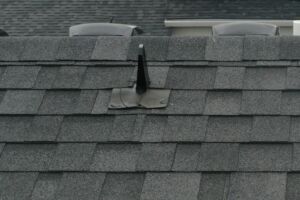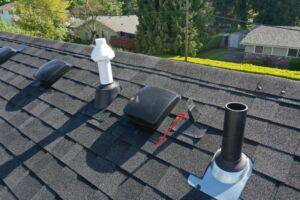
Roof anchors can come in various forms, depending on the specific application and requirements. Some common types of roof anchors include:
D-Ring Anchors: These are typically metallic rings that provide a secure attachment point for connecting lifelines or lanyards. They can be fixed or temporary, depending on the intended use.
Roof Ridge Anchors: These anchors are designed to be installed along the ridge of a sloped roof. They provide attachment points for lifelines, allowing workers to move freely while remaining connected to the fall protection system.
Horizontal Lifeline Systems: These systems consist of a series of anchors connected by a horizontal lifeline. They enable workers to move horizontally across the roof while remaining secured to the lifeline, providing continuous fall protection.
Swivel Roof Anchors: These anchors are designed to allow rotation, offering increased mobility for workers while maintaining a secure attachment point. They are particularly useful in situations where workers need to move around a large area.
The installation of caps on roof anchors is an important aspect of their proper functioning and long-term effectiveness. Caps serve as protective covers that are placed over the roof anchor points. It should be noted that not all of the roof anchor designs listed above come equipped with the ability to secure and house a protective cap. The most common residential roof anchor design typically is accompanied by a protective cap and should be utilized accordingly.

Many safety regulations and standards, such as those set by organizations like the Occupational Safety and Health Administration (OSHA), specify the need for roof anchor caps as part of fall protection system requirements. Compliance with these regulations is essential to ensure a safe working environment and to avoid potential penalties or legal liabilities.
It is worth noting that caps for roof anchors should be specifically designed and manufactured for the intended application. They should be compatible with the type and size of the roof anchors to ensure a proper fit and optimal protection. Additionally, regular inspections and maintenance should be conducted to ensure the caps remain in good condition and continue to provide effective protection.
Although roof anchor caps, by themselves, are not specifically designed to prevent roof leaks. Their primary purpose is to provide protection for the roof anchor points and enhance safety in fall protection systems. However, indirectly, roof anchor caps can contribute to preventing roof leaks by minimizing potential damage to the roof anchors themselves. When installed properly, roof anchor caps act as a protective barrier, shielding the roof anchor points from direct exposure to the elements, including rain, snow, and debris. By preventing moisture infiltration and accumulation around the anchor attachment points, caps can help reduce the risk of water penetration through the roof.
Capping roof anchors is an important measure to safeguard the integrity and functionality of the fall protection system. Caps offer weather protection, enhance safety, prevent damage, and help comply with safety regulations, ultimately contributing to the overall safety of workers operating at heights.
